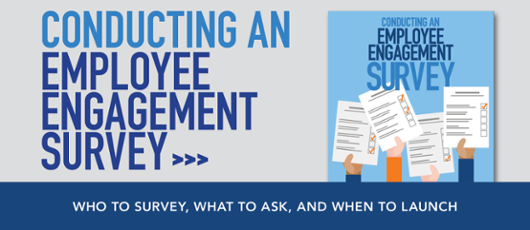6 Pro Tips for Sharing Employee Engagement Survey Results
 Sharing employee engagement survey results isn’t always fun, especially if the results are negative, telling you a discouraging story that you didn’t want to hear.
Sharing employee engagement survey results isn’t always fun, especially if the results are negative, telling you a discouraging story that you didn’t want to hear.
But, seemingly discouraging feedback can turn into a valuable opportunity for growth when you share the results with the people who need it. Providing employee engagement survey results with your team is key to producing actionable strategies to create a rewarding and engaging experience for employees year after year.
Whether it’s an employee engagement survey, a pulse survey, or anything in between, we have some tips and tricks to make the results-sharing conversation easier and more effective.
Here are 6 tips for sharing employee engagement survey results:
1. Share results as soon as possible.
It’s important to share results while the survey content is still fresh in your team’s mind. Conflicts pass quickly—don’t wait too long to discuss the results, or you may risk missing feedback that was momentary. When too much time exists between the rollout of your employee survey and a discussion of results, collected feedback often no longer reflects employee’s opinions and your surveys lose their purpose.
In addition, sharing results quickly tells employees that their feedback is valued and prioritized, which is essential to drive employees to provide honest, thoughtful survey responses again in the future.
2. Be transparent.
Sharing a copy of the team’s survey feedback (as long as the responses are not confidential and/or personal) directly with your team is the best way to be transparent. This boosts trust within teams by showing you have nothing to hide. It also allows the team to digest and reflect upon the results before diving into the results-sharing conversation.
3. Set clear expectations.
Communicate your expectation to share results and identify areas of improvement. Emphasize the importance of accountability—one sole person isn’t responsible for improvement initiatives or creating a great team culture. Every member of your team should own a component of your improvement plans.
4. Keep it simple.
When discussing your survey results, point out the most favorable and least favorable responses. These represent the team’s strengths and weaknesses and serve as a perfect introduction to discuss opportunities for improvement.
5. Initiate dialogue.
Ask open-ended, thought-provoking questions like:
- What was on your mind when answering this question?
- What can the team do to help you strongly agree with this question?
These questions will invite honest conversations that build the foundation for future improvement. Initiate follow-up conversations after the initial discussion to stay on track with your goals. Leverage pulse surveys to continuously ask for feedback regarding your growth initiatives.
6. Align on next steps.
Clearly define what is being improved and how. Determine the following:
- What are the first steps?
- What are the end goals?
- What steps need to be taken to achieve our end goals?
- How can we best collaborate to complete these steps?
This roadmap of implementation shows dedication to the betterment of the team. Collaboration reiterates the importance of shared responsibility and individual ownership of employee engagement.
When your team has a dedication to acting on feedback, employee engagement and performance improves to promote successful business outcomes.
Ready to move the needle on employee engagement? Leverage our ebook, The Complete Guide to Conducting an Employee Engagement Survey to understand how to launch, share, and act on results from your employee engagement survey.







